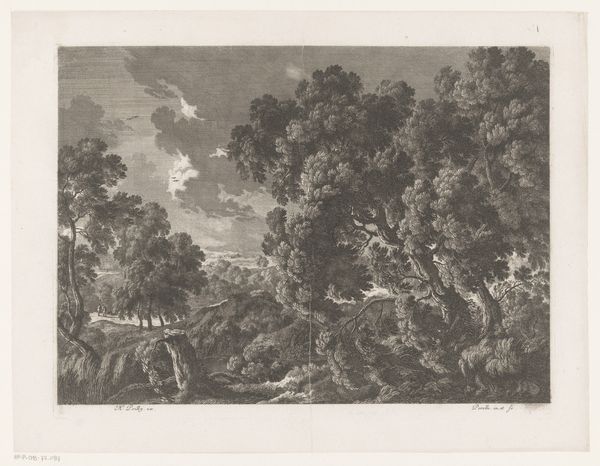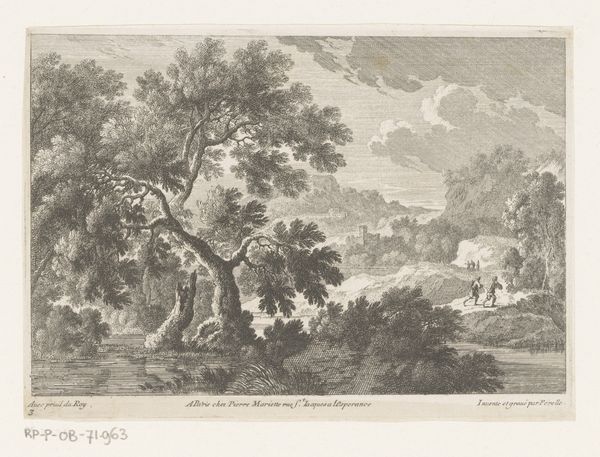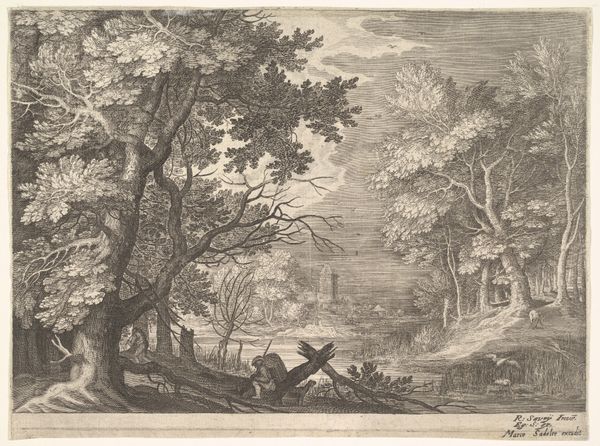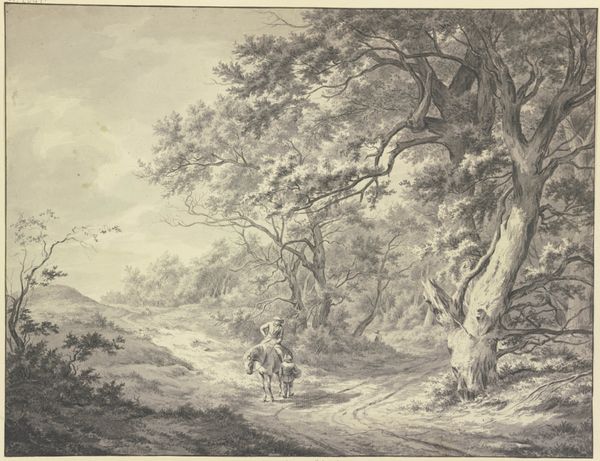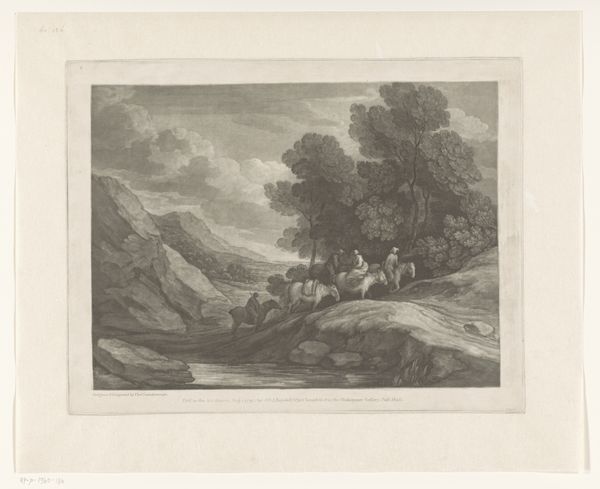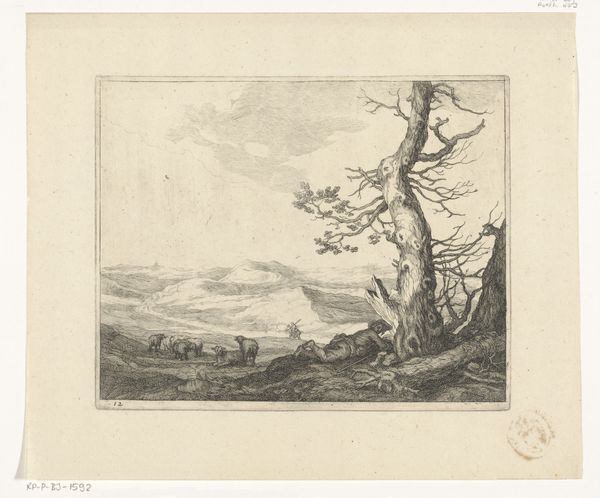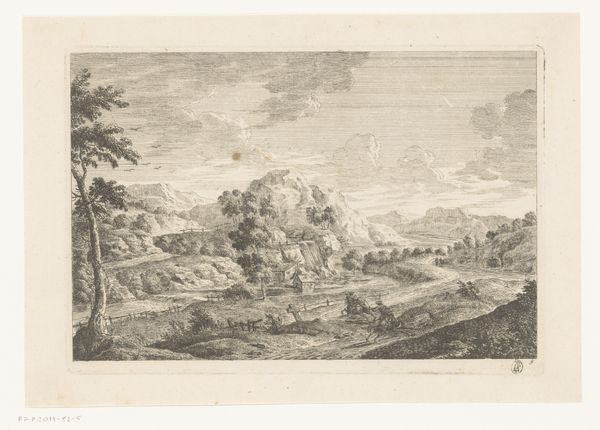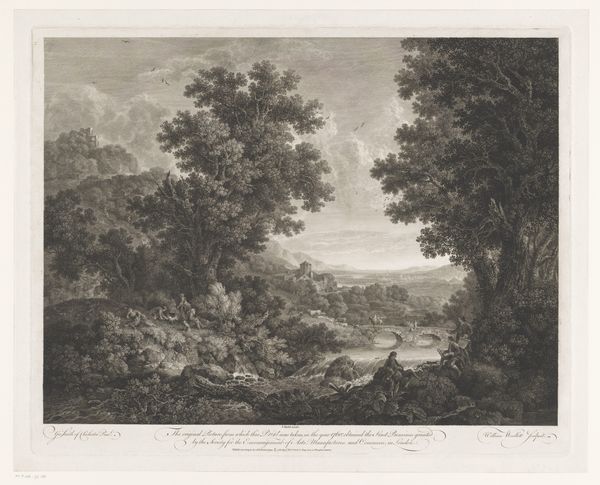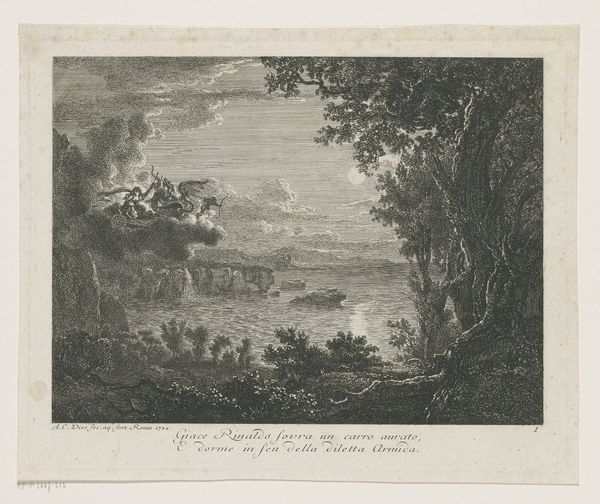
Dimensions: height 531 mm, width 614 mm
Copyright: Rijks Museum: Open Domain
Editor: Here we have Richard Read's "Coastal Landscape with Storm, Lightning Strike, and Shipwreck," created around 1776. The graphite drawing evokes such a sense of drama and awe. I'm struck by how small the figures seem against the immensity of the storm. What catches your eye, and how would you interpret its message? Curator: This image very clearly plays into the Romantic movement's fascination with the sublime. The shipwreck is a key component; disasters held particular appeal, especially shipwrecks. It showcased nature's indifference to human suffering. Consider the rise of maritime power during this period and how often naval conflicts influenced public consciousness and shaped imperial ambition. What role might print culture have played in amplifying such interests? Editor: I hadn’t considered it that way. So, the print’s dramatic subject matter reflects the broader 18th-century fascination with both Britain's naval dominance and its vulnerabilities. But the landscape itself feels almost stage-like... Curator: Exactly! And the artist has consciously placed human figures into this scenario, diminutive against the power of nature but positioned to bear witness. It invites the viewer to contemplate humanity’s place in a world that's indifferent, if not hostile, to us. Do you think that political and social upheaval occurring at the time affected its meaning for contemporary audiences? Editor: Absolutely, I think the backdrop of political instability and revolutionary sentiments likely heightened the impact, reminding viewers of the fragility of even the most powerful empires. Curator: Precisely. Seeing Read’s dramatic depiction in this light truly brings depth to the reading, providing more cultural and political understanding to the original aesthetics of sublime encounter.
Comments
No comments
Be the first to comment and join the conversation on the ultimate creative platform.

